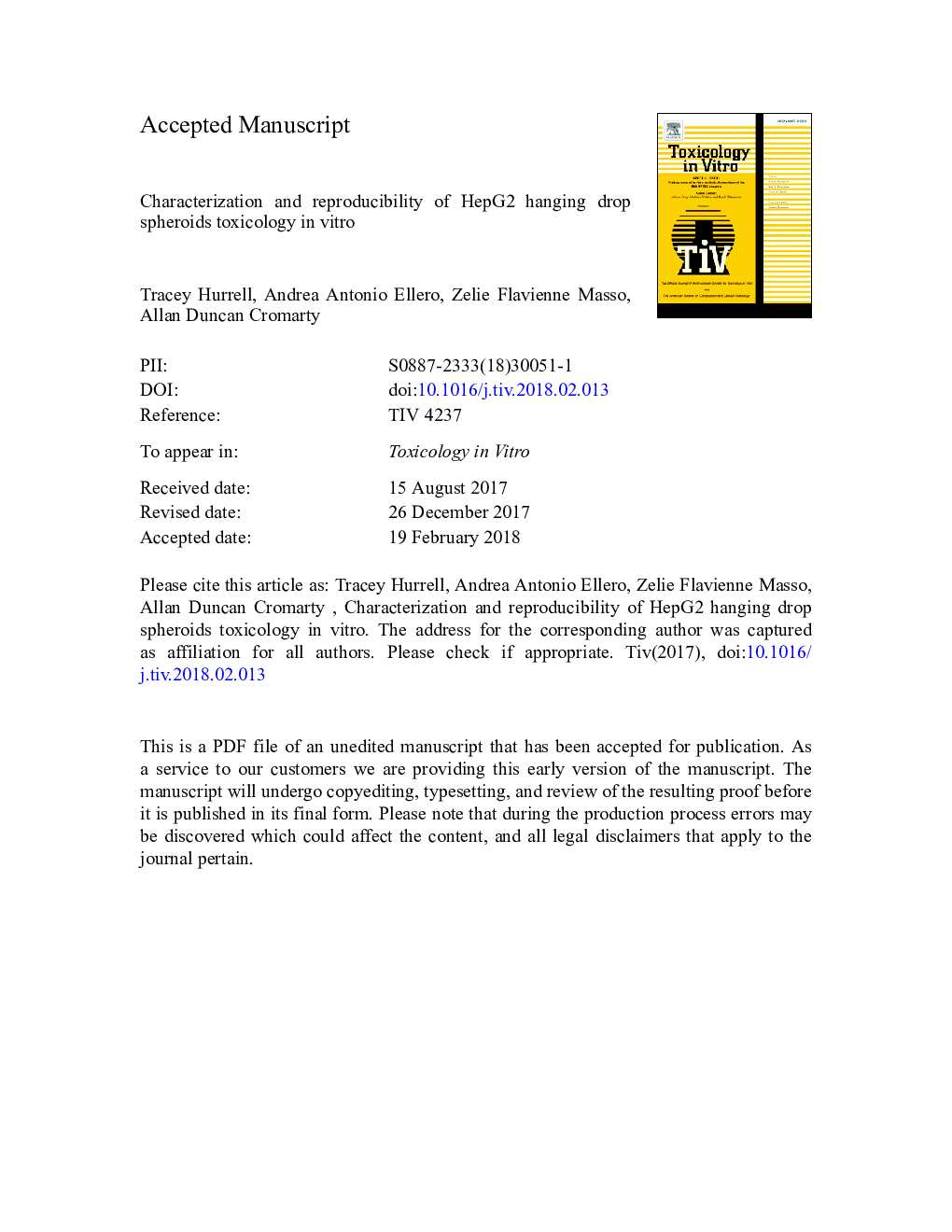| Article ID | Journal | Published Year | Pages | File Type |
|---|---|---|---|---|
| 8553928 | Toxicology in Vitro | 2018 | 24 Pages |
Abstract
Hepatotoxicity remains a major challenge in drug development despite preclinical toxicity screening using hepatocytes of human origin. To overcome some limitations of reproducing the hepatic phenotype, more structurally and functionally authentic cultures in vitro can be introduced by growing cells in 3D spheroid cultures. Characterisation and reproducibility of HepG2 spheroid cultures using a high-throughput hanging drop technique was performed and features contributing to potential phenotypic variation highlighted. Cultured HepG2 cells were seeded into Perfecta 3D® 96-well hanging drop plates and assessed over time for morphology, viability, cell cycle distribution, protein content and protein-mass profiles. Divergent aspects which were assessed included cell stocks, seeding density, volume of culture medium and use of extracellular matrix additives. Hanging drops are advantageous due to no complex culture matrix being present, enabling background free extractions for downstream experimentation. Varying characteristics were observed across cell stocks and batches, seeding density, culture medium volume and extracellular matrix when using immortalized HepG2 cells. These factors contribute to wide-ranging cellular responses and highlights concerns with respect to generating a reproducible phenotype in HepG2 hanging drop spheroids.
Keywords
Related Topics
Life Sciences
Environmental Science
Health, Toxicology and Mutagenesis
Authors
Tracey Hurrell, Andrea Antonio Ellero, Zelie Flavienne Masso, Allan Duncan Cromarty,
